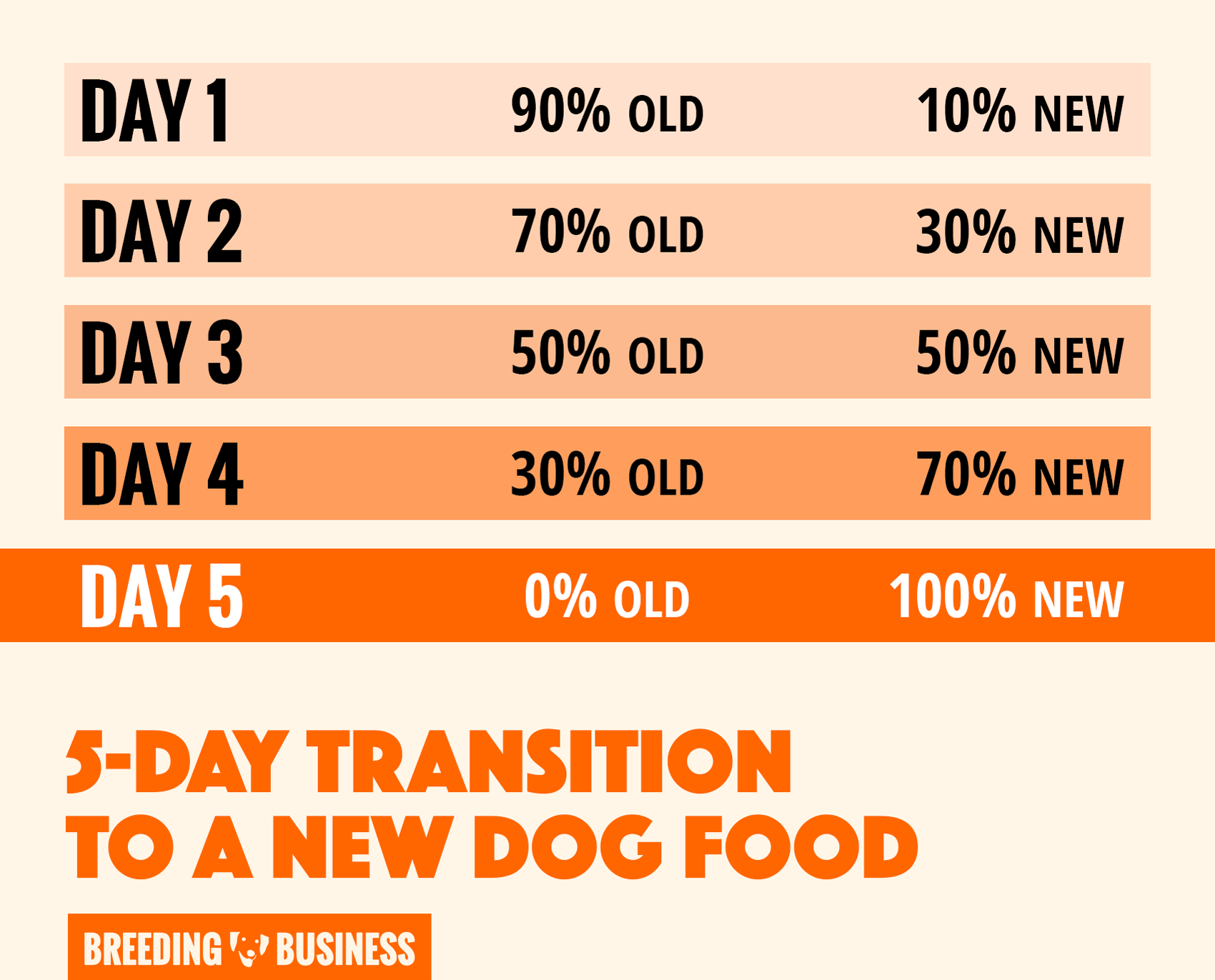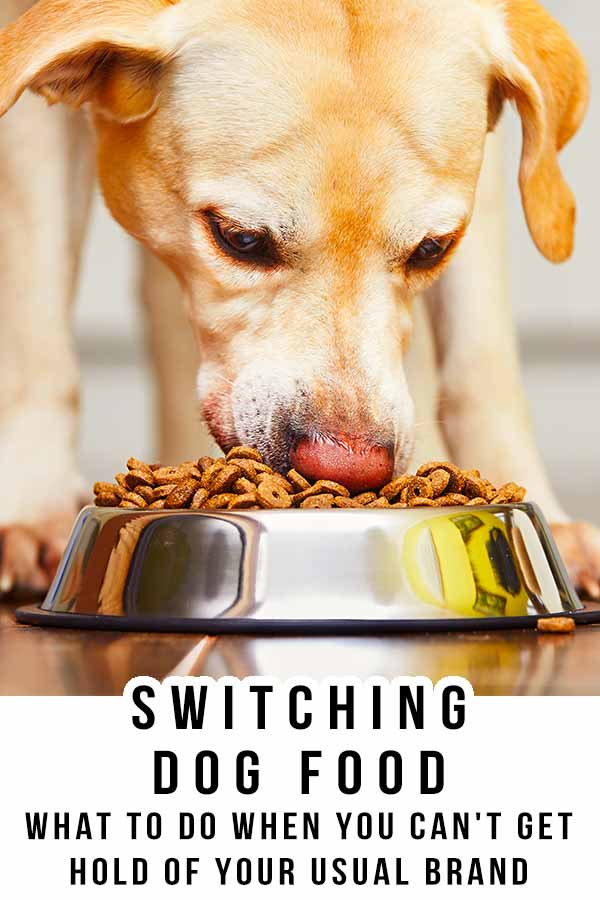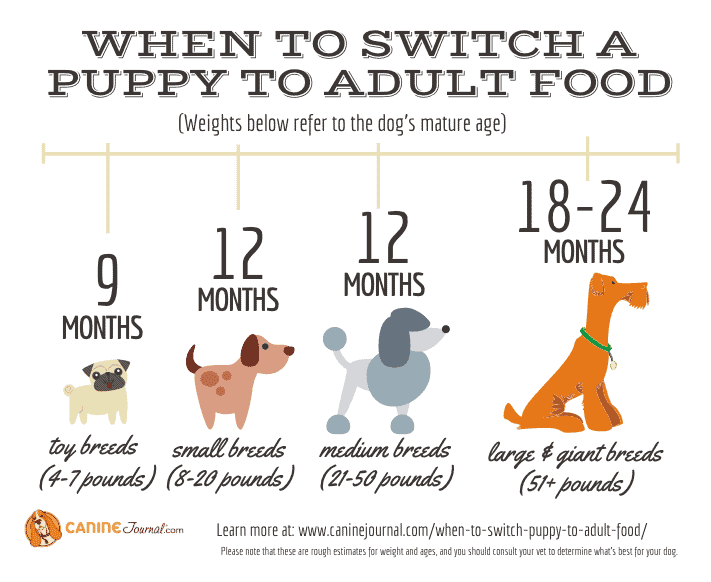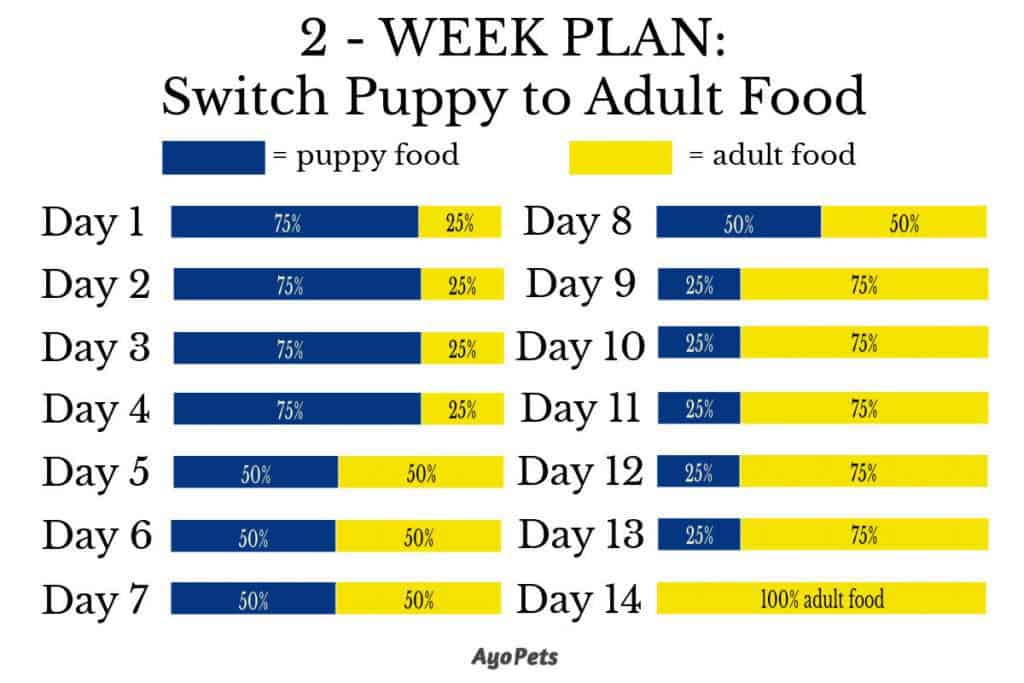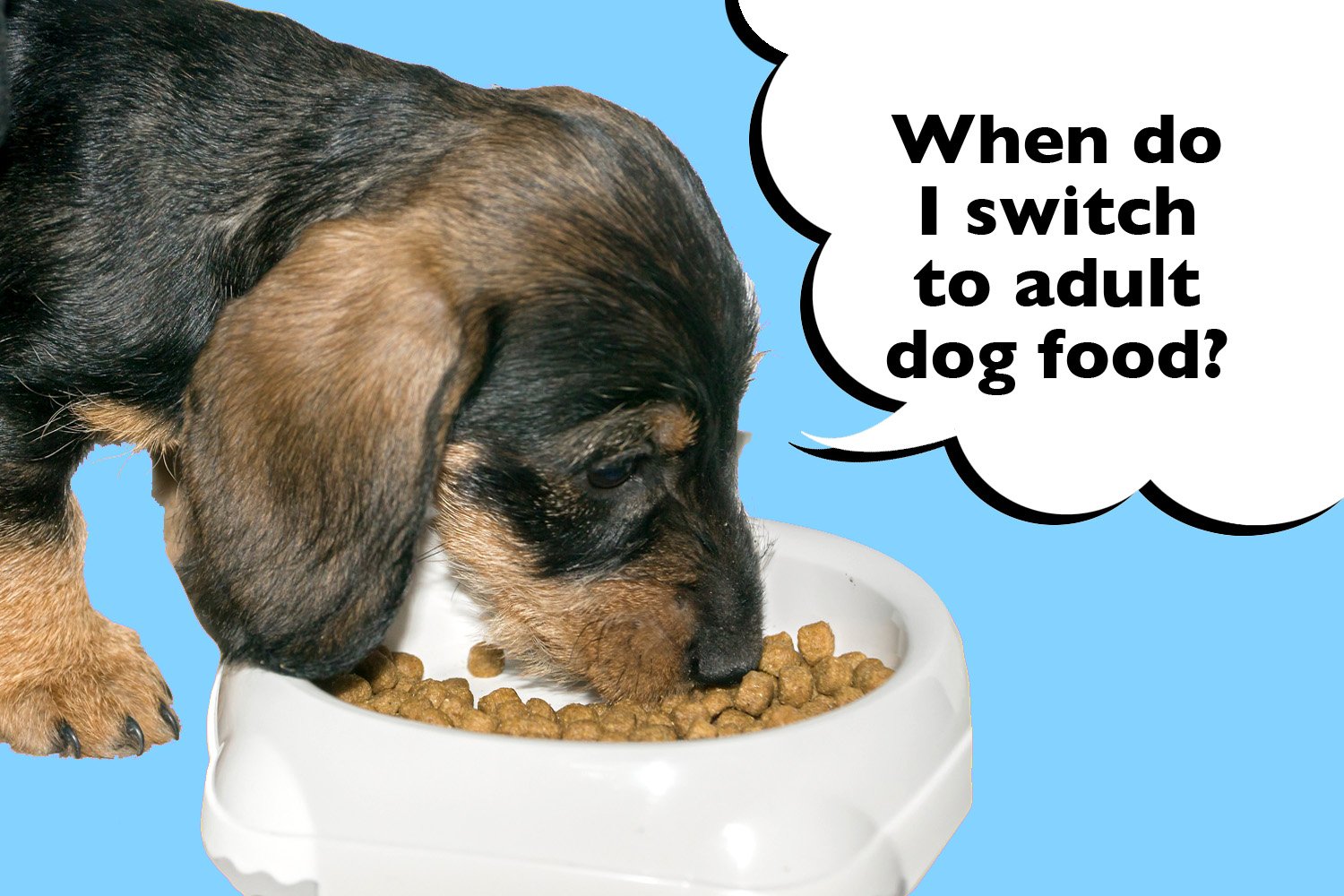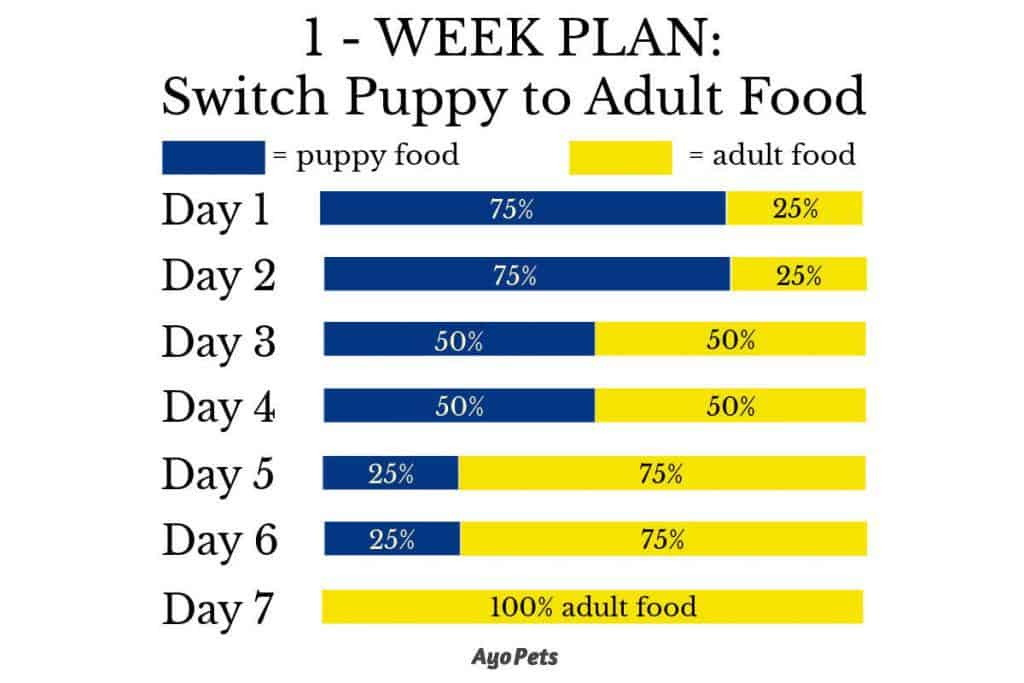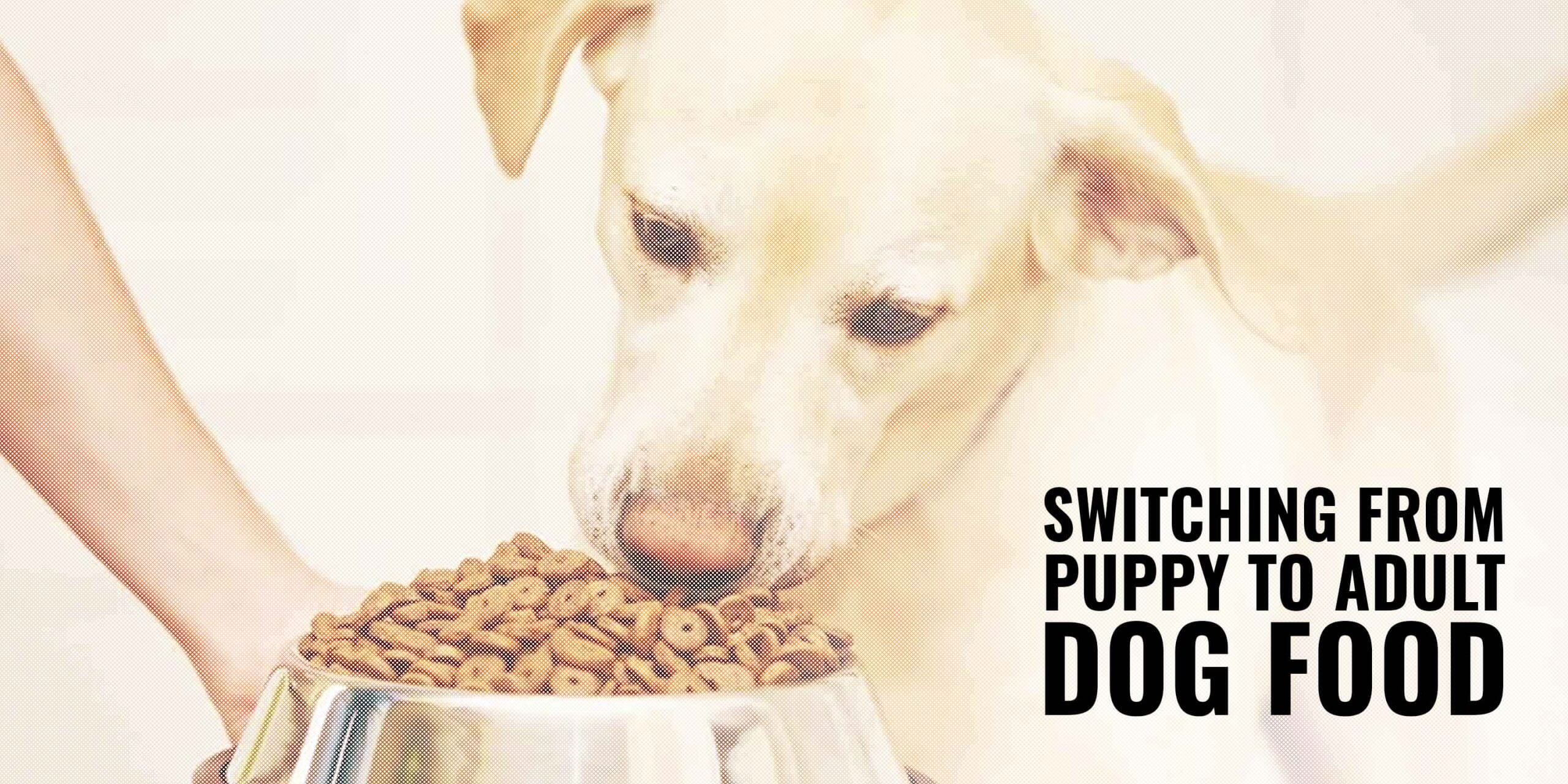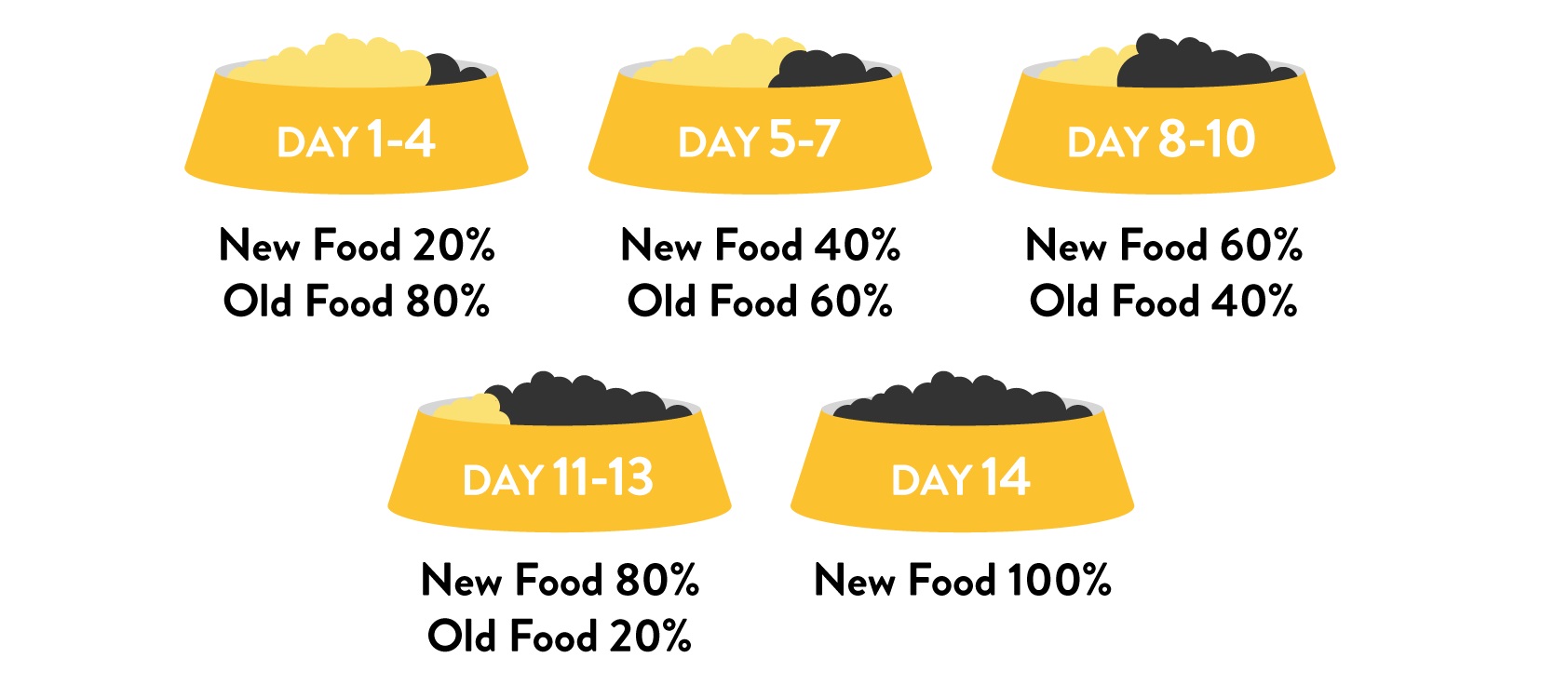When Do I Switch Puppy Food To Dog Food
.jpg)
Confused about when to transition your adorable pup to adult food? Timing is crucial for optimal health and avoiding potential developmental issues.
Knowing when to switch from puppy food to adult dog food is a vital decision impacting your dog's long-term well-being. This guide provides essential information to help you make the right choice at the right time.
Timing is Everything: Why and When to Switch
The ideal time to switch depends primarily on your dog's breed size. Larger breeds mature slower than smaller breeds.
Here's a general guideline: * Small breeds (under 20 lbs): Switch around 9-12 months. * Medium breeds (21-50 lbs): Switch around 12-15 months. * Large breeds (51-90 lbs): Switch around 12-18 months. * Giant breeds (over 90 lbs): Switch around 18-24 months.
Why can’t I just keep feeding puppy food? Puppy food is higher in calories, fat, and protein to support rapid growth. Continuing to feed puppy food past the appropriate age can lead to obesity and skeletal problems, especially in large breeds.
Understanding the Nutritional Differences
Puppy food is specifically formulated to fuel rapid growth. It contains higher levels of protein, fat, and calcium.
Adult dog food is designed to maintain a healthy weight and body condition in mature dogs. It has a balanced nutrient profile to support overall health and longevity.
Switching too early can deprive your puppy of the nutrients they need. Switching too late can lead to weight gain and other health problems.
Making the Transition: A Gradual Approach
Never abruptly switch your puppy's food. A sudden change can cause digestive upset, including vomiting and diarrhea.
Here's a recommended transitioning schedule: * Days 1-3: 75% puppy food, 25% adult food. * Days 4-6: 50% puppy food, 50% adult food. * Days 7-9: 25% puppy food, 75% adult food. * Day 10: 100% adult food.
Monitor your dog's stool and appetite during the transition. If you notice any signs of digestive upset, slow down the process.
Choosing the Right Adult Food
Select an adult food that is appropriate for your dog's breed size and activity level. Look for a food that lists a quality protein source (like chicken, beef, or fish) as the first ingredient.
Consider consulting with your veterinarian for personalized recommendations. They can help you choose a food that meets your dog's specific needs.
Avoid foods with excessive fillers, artificial colors, and preservatives. Choose a reputable brand with a proven track record.
Beyond the Food: Other Important Considerations
Weight management is crucial during and after the transition. Adjust your dog's food portions as needed to maintain a healthy weight.
Continue to provide plenty of fresh water and regular exercise. These are essential for your dog's overall health and well-being.
Schedule regular veterinary checkups to monitor your dog's health and address any concerns. Your vet can provide valuable guidance on nutrition and preventative care.
"Switching your dog's food is a significant step in their life. Doing it right ensures a healthy and happy future," states Dr. Emily Carter, a leading veterinarian.
Always read the feeding guidelines on the food packaging. These are just a starting point; adjust the amount based on your dog's individual needs.
If you have any concerns about your dog's health, consult with your veterinarian. They are the best resource for personalized advice and guidance.
Next Steps: Monitor and Adjust
Continue to monitor your dog's weight, appetite, and energy levels after the transition. Make adjustments to their diet as needed to maintain optimal health.
Be prepared to try different food brands or formulas if your dog doesn't thrive on the first one you choose. Patience and persistence are key.
Prioritize your dog's health and well-being by making informed decisions about their nutrition. A proper diet sets the foundation for a long and happy life.
